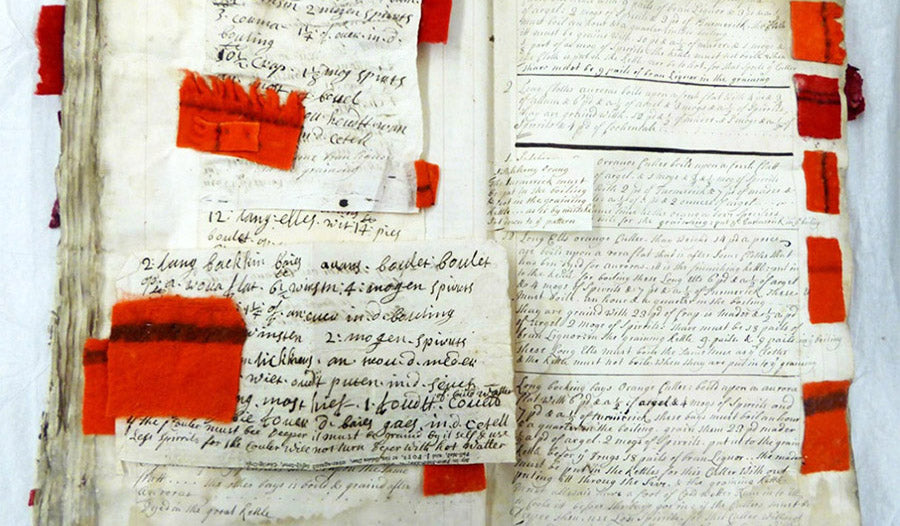
PHILIPPA KELLY Records of 18th Century Dyeing

Image: From the Crutchley collection: 6 dyeing recipes from the 1720’s in Flemish and English.
The Crutchley family were dyers in 18th century London. John Crutchley (b.1676), opened his dye-works, located in Southwark, near the bank of the River Thames, in 1781. In 2011, Anna Crutchley, a descendent of John, donated fifteen volumes of his dyeing and business account books, dating from around 1716-1744, to Southwark Local History Library and Archive. Today, in acknowledgment of the collection’s importance, the collection is part of the the UK Memory of the World Register.
The Crutchley collection records techniques that were, for the most part, lost with the discovery of synthetic dyes. It is rare that materials relating to dyed textile production, of this type and period, survive as a provenanced collection in such good condition and extent. The collection includes two cash books, three hardcover pattern books, five dye books, and four calculation books. Taken together, they give a complete and well-rounded view of a contemporary textile business that few other collections can match.
The pattern books offer brief instructions on how to create a specific colour for a specific named person. Most have a small sample of finished dyed fabric attached, the colours of which are still vivid after nearly 300 years. The dye books are filled with more detailed instructions, including information on techniques dating back as far as 1716. The four calculation books don’t have samples – instead, they are working technical manuals, giving details of agents and quantities to produce specific effects. The cash books tell us that the firm took orders from more than 140 named individuals between 1721 and 1725, as well as the British East Indian, Dutch East Indian, and South Seas companies. A single order could cost the equivalent of £250,000 today.
Southwark Local History Library and Archives plans to digitise examples from this important collection, as well as to work with local residents and charities to reproduce dye samples using the original recipes.
For more information visit www.nmct.co.uk.
Image courtesy of Southwark Local History Library and Archives.
